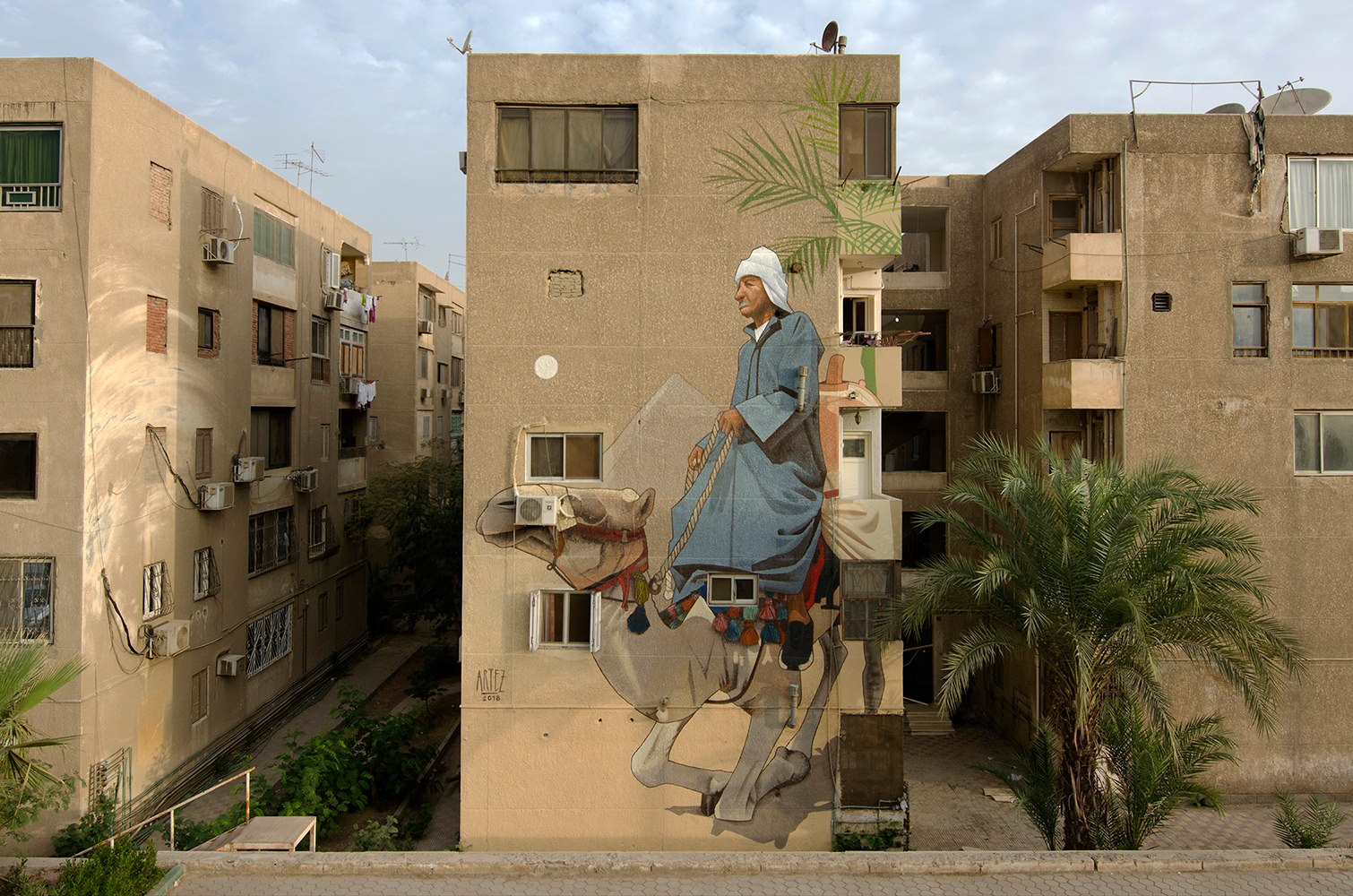A train meanders on the walls of a narrow alley in the Burullus town of Kafr el-Sheikh, barely able to carry the passengers hanging from its windows and clinging to its doors. The mural – the brainchild of artist Ahmed Selim – depicts the growing population in Egypt.
“The train is debilitated, its track is broken and is headed to the unknown,” Selim says, “This represents the looming challenge posed by the population density in Egypt.”
The mural comes as part of UNFPA Egypt’s Art for Development initiative, whereby UNFPA employs unconventional methods such as art to advocate for health and population issues.
The Art for Development initiative included a partnership between UNFPA and the Abdel-Wahab Abdel-Mohsen Foundation for Culture, Art and Development in Burullus, whereby 42 artists, from 16 different countries were invited to participate in the 5th Burullus Symposium for Drawing on Walls and Boats in October.
Prior to the event, the artists were coached on UNFPA’s mandate and the population challenges facing Egypt. Using the town’s walls and boats as their canvases, the artists depicted population issues in their art, creating a platform for dialogue. Their final creations shed light on issues such as population growth, early marriage, and FGM.
During the first week of the symposium, artists took to the walls of the town, covering them in vibrant colors, while the second week artists focused on painting boats in the fishing town.
It took Selim around four hours to finish his mural. The idea came to him as soon as he started stroking the walls directly with paint, with no prior planning, or a prepared sketch and outline.
The artist received positive feedback from the neighborhood’s residents and passersby, who were taking photos next to it. “People kept telling me this mural should be on the main street, not an alley,” he recalls, “but I like that it makes it seem that the train is turning and coming out of the alley, onto the main street.”
What distinguishes Selim’s mural is that its colors are distinct and its message is straight forward.
“Murals should be interactive,” he explains, “they should be easy for anyone to understand – that’s where their value lies.”
Discussions and workshops on population issues were also held in tandem to the symposium, according to Hanan Mousa, Deputy Minister of Culture, who participated in the symposium in her capacity as an artist.
“It was the residents’ spirit and presence, as well as their interactions with us, that encouraged us to talk to them and discuss different population issues,” she says.
Mousa explains that she was impressed with the level of awareness among Burullus’ residents on different population challenges.
“One mother told me she will not marry off her daughter at an early age so she doesn’t subject her to the same experience she went through,” Mousa recalls, “it is then that I realized that the residents have the willingness to discuss these issues openly.”
Mousa also worked on two projects at the symposium, a mural on the walls of Burullus and a boat.
An image of a girl and an older man were painted on the boat. The girl was depicted only through her eyes and the man through his moustache. While Mousa says it is open for interpretation, the two specific features she chose to highlight send a strong message.
“I wanted to show that manhood is not only represented in a moustache, it is actions and how you protect this girl,” she explains.
The girl’s eyes however, are a gateway to the future, Mousa says.
Further south, in Cairo’s neighborhood of Heliopolis, a man perched on a camel is painted across one building.
The man caught Serbian muralist Andrej Zikic’s (Artez) attention when he was sightseeing at the pyramids. A few days later, this image was replicated on the large mural.
Because of his busy schedule, Artez, who also participated in Burullus, only had two days to complete the mural, dubbed “Sand Stories.” After taking a photo of that man, he made a digital sketch, prepared the color palette and transferred the sketch on to the wall. He then proceeded to work on its intricate details and fill it with color.
Artez’s intervention in Cairo marks the launch of a beautification project across Egypt’s governorates in partnership with Amer Group. The project is set to wander through different governorates, soliciting local artists to create paintings as well as dialogue in their respective communities around sexual and reproductive health issues.
The Serbian artist recalls the neighborhood residents being very enthusiastic about the mural. “They were taking photos of the wall and thanking me for making their neighborhood more beautiful,” he recalls.
The mural was recently selected as one of the most beautiful murals of 2018 by Widewalls, an online art gallery.
“Inspiration [for the mural] came from my vision of Egypt and from what I imagined I would see when I come,” Artez says, “I am really interested to see how my artistic approach will change with time that I will hopefully spend in Egypt.”


